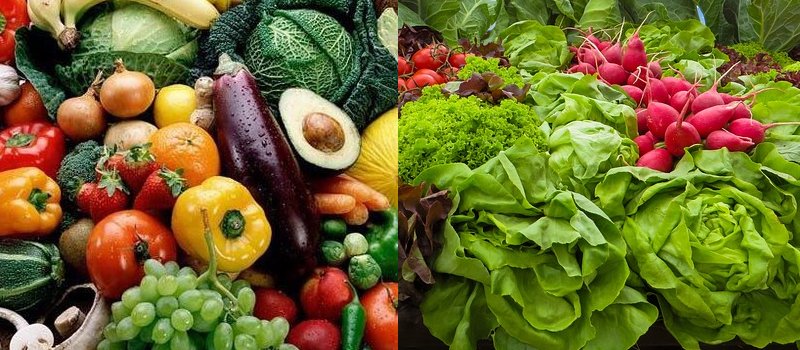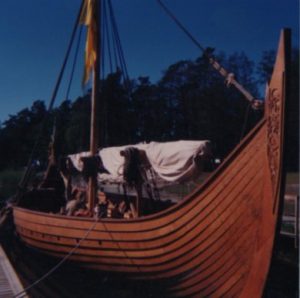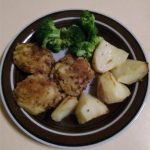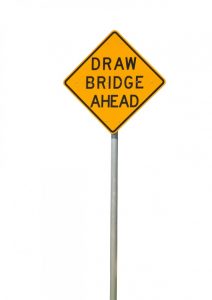Diane’s Newsletter 19th June 2018

is the 22nd letter of the English alphabet and the sixth least frequently used letter in that same alphabet. Originating in the Semitic letter waw, it travelled through Greek and Latin as both V and W. By the Middle Ages it had two forms – V and U where V was used at the beginning of a word and U was used in the middle or the end. An example of this is haue (have) and vpon (upon). By the seventeenth century the use of V as a consonant and U as a vowel was already established.
V can be used on its own to stand for the word versus. It can also be indicated with two fingers to mean victory. The Roman numeral V stands for the number 5 and the form of the letter is present in such expressions as ‘V-shaped formation’ or ‘V-neck jumper’.
In numerology, a person whose name begins with V is most probably a hard worker and very disciplined but, at the same time, responsive to spiritual things. The V denotes an inspirational leader – a person who can convert an idea into a practical form while organizing people and inspiring confidence and loyalty. Intuitive awareness is a strong characteristic of the V. The colours connected with V are green and gold.
Vertigo, according to the OED, is a condition with a sensation of whirling and a tendency to lose balance; dizziness, giddiness. It comes from the Latin (whirling) and from the French (turn).

It is a sensation that many of us experience at least occasionally (I need only climb to the second rung of the ladder and everything inside of me is both whirling and turning). Even those who have no difficulty standing on the very edge of a cliff without a safety fence or who work in construction where agility on high scaffolds is the number one work requirement can succumb to such a sensation if their balance is in any way impaired.

Most of you would have seen Alfred Hitchcock’s film Vertigo. It tells about a policeman, Scottie, who suffers not only from a fear of heights but also from vertigo. These fears lead to a disastrous incident, which results in Scottie’s early retirement. A distant friend of Scottie’s asks him to follow his wife as he fears she may be in danger, and from this point the story whirls giddily through intrigue, suicide, murder and accidental death while the main characters move unexpectedly between ‘good’ and ‘bad’. Thought by many to be not only Hitchcock’s best film but the best film ever made it has to be seen to be appreciated.
Images from chicagohealthonline and examininghitchcock.wordpress
Vegetarians
With V as the theme letter this month I can hardly avoid writing something about Vegetarians.

A vegetarian is, of course, a person who eats vegetables. On the basis of this rather simplified description, some people will declare themselves to be vegetarian even though they also eat fish, chicken, shellfish, eggs. . . They will usually hastily add that they do not eat red meat and that they do eat vegetables.
Unfortunately, the combination meat + fish + vegetables does not add up to vegetarian.
Vegetarians eat vegetables, pulses, beans, fruit, grains, nuts. . . in other words, everything edible from the plant world and no dead sentient beings. Some vegetarians also use milk products and are called lacto-vegetarians. A pure vegetarian (no milk products) is a vegan.
Forty years ago a vegetarian diet was considered by many to be synonymous with suicide, and some people probably felt that it should be labelled as a criminal offence; today it is dished up by all forms of media as the only way to eat if you want to be fit and healthy. However, many of these articles/programmes tend to keep a foot firmly in each camp, suggesting that any vegetarian diet should also include lean meat and fish, which of course brings me back to what I said earlier about plants versus deceased sentient beings.
Nowadays it is extremely easy to be a vegetarian: the stigma of lunacy has been removed; books on vegetarian cooking abound, both in physical book shops and online; and supermarkets prize themselves on their selection of fresh, colourful vegetables and fruit. Whether or not you are already a vegetarian or whether or not you wish to find out more, you may be interested in this article from The Sydney Morning Herald.
Vikings
Everyone knows at least something about the Vikings, and with the many films that have appeared of late Vikings now have not only historical but also entertainment value; however, in spite of all this coverage it is possible that not everyone is aware that there is a sea-going Viking ship in Sweden, but more about that further on.
Vikings made their appearance in the late 700s and were prominent until the early 1100s by which time Christianity had established itself in Scandinavia. It is commonly known that they were farmers but also skilful sailors; they followed the Old Norse religion, which had the world tree, Yggdrasil, at its centre; they did not wear horned helmets; Viking women enjoyed equality with men; and archaeological evidence shows them to have been clean and well groomed.
 What may not be so widely known is that it is possible to see a Viking ship on Lake Vänern, in the south-west Sweden. The Sigrid Storråda, which is an exact copy of the Gokstads viking ship in Norway, has its home port at Blomberg’s harbour on Lake Vänern. It was designed and built in Lidköping by The Association for the Viking Ship Sigrid Storråda, and it was launched in 1995.
What may not be so widely known is that it is possible to see a Viking ship on Lake Vänern, in the south-west Sweden. The Sigrid Storråda, which is an exact copy of the Gokstads viking ship in Norway, has its home port at Blomberg’s harbour on Lake Vänern. It was designed and built in Lidköping by The Association for the Viking Ship Sigrid Storråda, and it was launched in 1995.
The ship was named after Sigrid Storråda (also known as Sigrid the Haughty), a rich and powerful (and, reportedly, beautiful) Viking lady who is believed to have lived in south-west Sweden in the late 900s. Legend tells us that she was first married to Erik Segersäll (king of Sweden), and after Erik’s death she was greatly sought after as a marriage partner (most possibly because of her vast estate); however, in order to deter all such interest she had two suitors burnt alive.
Her hand was then sought by Olaf Tryggvasson, who was king of Norway (and, in light of what had happened to other suitors, a very brave man). He was doubtlessly hoping to unite Sweden and Norway, but Olaf had converted to Christianity and Sigrid would have been required to do the same in order to marry him. She is recorded as having said: “I will not part from the faith which my forefathers have kept before me”, at which point Olaf hit her across the face with a glove. Sigrid responded by saying that his action could well be his death.
She consequently married the king of Denmark Sven Tveskägg, a union which allied Sweden and Denmark, and she proceeded to form a coalition of Olaf’s enemies. In the year 999 or 1000, the combined Danish, Swedish and Wendish (Slavic) fleets encountered Olaf, possibly in the Sound between Denmark and Sweden. Olaf was seriously outnumbered, and when he saw that he had no chance of surviving, he threw himself overboard.
It is somewhat ironic in light of all that happened that Sigrid’s son Olof Skötkonung was Sweden’s first Christian king. 
Whether everything about Sigrid is correct or not – some historians believe that she never actually existed – the ship bearing her name is very real. It is 26 metres long, 5.3 metres wide, weighs 17 tons and is made from oak with iron rivets. It also has 16 oars made from pine. During the summer Sigrid Storråda does a number of interesting trips around Lake Vänern and is also available for private bookings such as weddings. More information on Sigrid’s website.
Information sources: wikipedia, Föreningen Vikingaskeppet Sigrid Storråda
Images: Sigrid Storråda small images (Diane); large image Carl-Henrik Skårstedt (flickr); Sigrid Storråda and Olaf Tryggvasson (wikipedia)
VEGGIE BURGERS

1 tin kidney beans (400g), drained *
1 tin chickpeas (425g) *
2 shallots (chopped finely)
3 medium potatoes (cooked and drained)
Egg replacer (for example No-Egg) equivalent to 1 egg **
Salt or herb salt
Pinch cayenne pepper
1/2 tspn turmeric (ground)
Italian Spices (or own preferred spices)
2-3 tablespoons vegetable oil (Sunflower oil) for frying
* Any beans can be used, in any combination. You can also use lentils and corn.
** Other egg replacers are, for example, yoghurt (1/4 cup), mashed avocado (1/4 cup), 1 tspn baking powder + 1 tablespoon apple cider vinegar.
Make sure that the beans and the cooked potatoes are all drained well. Mash together and add the other ingredients. Mix well. The mixture should be fairly stiff.
Shape the mixture into patties. Place the patties in the ‘fridge until you are ready to fry them.
Heat the oil in the frying pan. Add the patties to the pan and fry for approximately 3 minutes on each side.
Serve the veggie patties or burgers between halves of hamburger bread together with your own choice of salad vegetables, or serve them with potatoes, pasta or rice, vegetables and, possibly, a salad.

Veronica Abolins
 My favourite, and most challenging focus, at the moment, is boundaries. It is actually only recently that I have wrapped my head around what boundaries might look like and why they are necessary in my life. So, please bear with me as I empty my thoughts about it on this page.
My favourite, and most challenging focus, at the moment, is boundaries. It is actually only recently that I have wrapped my head around what boundaries might look like and why they are necessary in my life. So, please bear with me as I empty my thoughts about it on this page.
My rudimentary understanding of boundaries, in the past, involved speed limits, national border control and passport regulation or having the right to say no to physical or sexual abuse. Boundaries could also appear to me as a nuisance and occasionally annoying rules to be broken.
In recent times, however, I am starting to get a better sense of what a boundary is and how I can, and am allowed to, set boundaries for myself. A shocking revelation is that my boundaries may even reveal aspects of my own identity. Here are some examples, which I stole from the internet (unhealthy boundary?), of what it might look like when my boundaries are unhealthy.

“In general, “[h]ealthy boundaries are those boundaries that are set to make sure mentally and emotionally you are stable” (Prism Health North Texas). Another way to think about it is that “[o]ur boundaries might be rigid, loose, somewhere in between, or even non-existent. A complete lack of boundaries may indicate that we don’t have a strong identity or are enmeshed with someone else” (Cleantis, 2017)” How to Set Healthy Boundaries by Joaquin (online behavioural neuroscience psychologist). Who would have thought that, saying no is perfectly fine and “no” is a complete sentence? I am actually not required to elaborate on why I choose to say no. How liberating!
I even don’t have to do things for other people or with other people if I don’t feel like it. In fact, doing things for others when I would prefer to do something else is sure to create a resentment in me, and it is actually not a very nice gift to someone if I don’t want to do it in the first place. Much better is to only do things for people when I really want to, then it means a lot more and I feel better for doing it.
One thing that has helped me understand boundaries better has been through my role as a parent. Over time I have realised that children get a sense of comfort in knowing what the boundaries are. They, in fact, expect the adult / parent to enforce these boundaries. Structure and routine provide clear guidelines to kids and makes them feel safe. Mixed messages or hazy boundaries can be confusing and cause breakdowns in communication. Kids thrive on boundaries, why wouldn’t I?

My favourite visual for boundaries, at the moment, is the image of a drawbridge. With the use of the drawbridge I can accept or not accept behaviour at my own discretion. The bridge allows me to feel safe in my “home”. I can look out the window, but I don’t have to let another person in, if I think it might be unsafe to do so.
I always thought that if I said no to my family, friends and other people I would upset them, or offend them or worse, lose them. I never thought that by always saying yes to people I might actually damage myself.
These days I am faced with a new perspective to boundaries. It is the boundary that I must set for my growing children. What is and what is not acceptable as children grow into adults? It feels like a whole new set of challenges, but is it? Maybe it is just a new angle on an old theme. I am not only helping my children set boundaries for themselves, but at the same time maintaining, even strengthening, my own boundaries. Without boundaries children can take over the power in a home while, at the same time, they may be terrified that they have power over their parents. However, overly rigid boundaries can damage the parent / child communication and push adolescents into rebellion. I know that being a parent is not a popularity contest, so what is it? An exercise in balance perhaps, knowing when to lift the drawbridge and knowing when it is safe to lower it.
Conceivably if I have a good handle on my own boundaries I can teach my children to also have healthy boundaries and that will assist them to walk a balanced path toward adulthood. If I maintain my visual of the drawbridge in my head I can regulate the behaviour that I will accept and the behaviour that I will not tolerate, more easily, and not feel bad about lifting the drawbridge once in a while. Knowing that boundaries are not about building walls but more about knowing who I am and what is acceptable to me and what is not. It is about me being a person acting with integrity and respect. If people overstep my boundaries I need to ask myself, am I a victim or am I a volunteer?